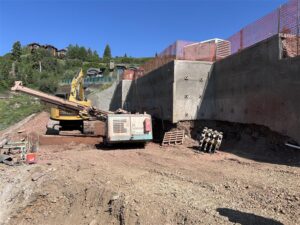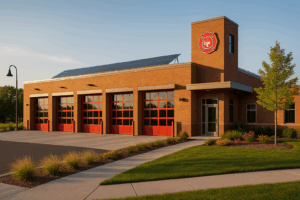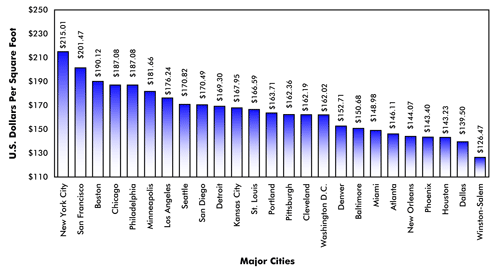Understanding Title 24 Regulations in California: A Guide for Developers and Designers
California’s Title 24 Building Standards Code sets the benchmark for energy efficiency and environmental responsibility in the built environment. Unlike many states that follow the International Building Code (IBC) almost exclusively, California layers additional requirements onto standard codes. This post explores Title 24’s scope, administration, and key differences from IBC-based codes.
What Is Title 24?
Title 24 refers to the California Building Standards Code, found in Title 24 of the California Code of Regulations (CCR). It includes 12 parts covering different aspects of building design, construction, and safety.
The most well-known portions are:
-
Part 2 – Building Code (based on IBC with amendments)
-
Part 6 – Energy Code
-
Part 11 – CALGreen (Green Building Standards)
Each part serves a specific regulatory function, with frequent updates to reflect new technologies and policy goals.
More info: Guidebooks on Title 24
Who Enforces Title 24?
The California Building Standards Commission (CBSC) oversees Title 24 regulations. Local jurisdictions, such as city or county building departments, enforce compliance during plan review and inspections.
The California Energy Commission (CEC) specifically manages Part 6, the Energy Code. Meanwhile, the California Department of Housing and Community Development (HCD) oversees residential aspects of Title 24.
The Structure of Title 24
Title 24 contains 12 individual “parts”:
-
Administrative Code
-
Building Code
-
Residential Code
-
Electrical Code
-
Mechanical Code
-
Energy Code
-
Plumbing Code
-
Historical Building Code
-
Fire Code
-
Existing Building Code
-
CALGreen Code
-
Referenced Standards Code
Each part may adopt model codes (e.g., IBC, NEC, UPC) with significant California-specific amendments. These often exceed national code requirements in stringency.
See: Breakdown of Codes
How Title 24 Differs from IBC
Title 24 builds on the IBC, but it includes many California-specific updates:
-
Energy Efficiency: Title 24’s Energy Code (Part 6) is far more aggressive than IBC minimums.
-
Green Building: Part 11, CALGreen, mandates green practices, whereas IBC has optional codes like the IGCC.
-
Wildfire Protection: California includes WUI (Wildland Urban Interface) requirements to address fire-prone areas.
-
Seismic Standards: California’s seismic provisions are stricter than IBC, due to active fault zones.
-
Accessibility: California overlays state-level accessibility rules onto ADA, sometimes exceeding federal standards.
-
Water Efficiency: CALGreen addresses water conservation beyond national plumbing code requirements.
In summary, IBC is the baseline, but Title 24 pushes performance and resilience further.
Key Features of Title 24 Part 6: The Energy Code
Part 6 mandates energy-saving measures for all new buildings and many retrofits. It includes:
-
Envelope performance requirements
-
HVAC efficiency standards
-
Lighting power allowances and controls
-
Mandatory solar photovoltaic for new residential buildings
-
Battery storage readiness requirements
The energy code uses Time Dependent Valuation (TDV) to measure energy impact during peak vs. off-peak hours.
See: Approved Compliance software
CALGreen (Part 11): A National First
California became the first state with a mandatory green building code. CALGreen applies to residential and non-residential projects.
Requirements include:
-
Construction waste diversion goals
-
Low-VOC building materials
-
Water-efficient landscaping
-
Pre-wiring for EV charging
-
Indoor air quality improvements
CALGreen contains mandatory and voluntary tiers, allowing jurisdictions to adopt stricter standards.
More info: CALGreen
Impact on Developers and Designers
Title 24 adds layers of complexity to building design in California. However, it also provides:
-
Opportunities for innovation in energy systems
-
Higher resale value for energy-efficient and resilient buildings
-
A pathway to compliance through performance modeling and third-party verification
Design teams must coordinate closely with Title 24 consultants during early design phases.
Common Pitfalls and How to Avoid Them
-
Assuming IBC compliance is enough – California codes often go further.
-
Missing energy modeling deadlines – It’s best to start modeling early in schematic design.
-
Ignoring local amendments – Cities like San Francisco and Los Angeles often go beyond the state code.
-
Delaying solar or EV infrastructure planning – These requirements are no longer optional.
EVstudio’s Experience with Title 24
EVstudio has extensive experience working with California’s Title 24 regulations. Our integrated team supports:
-
Structural and MEP coordination with California codes
-
Modular and offsite construction designs that meet Part 6 and Part 11 standards
-
Adaptive reuse and residential retrofits requiring Title 24 updates
We ensure compliance while helping clients reach their performance, cost, and schedule goals.
Conclusion
Title 24 reflects California’s commitment to safe, sustainable, and high-performance buildings. While more complex than IBC alone, it offers long-term benefits in durability, energy savings, and climate resilience. Developers and designers working in California must understand and anticipate Title 24 requirements from the start. EVstudio is proud to help clients navigate this regulatory landscape.











